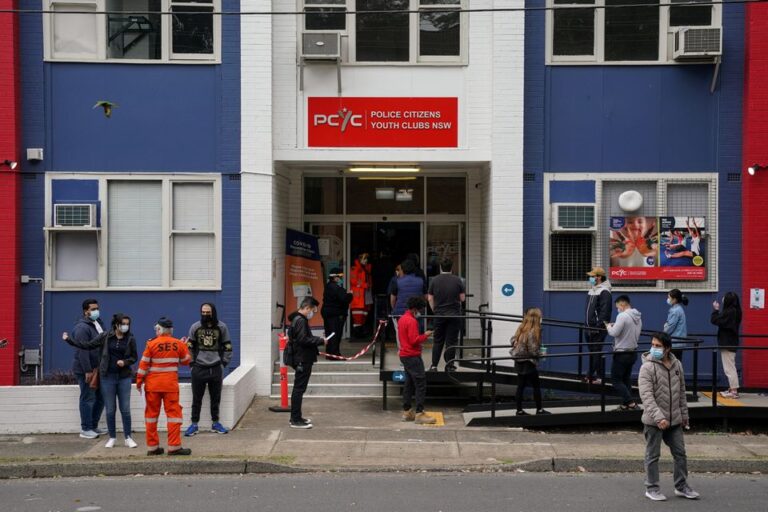
SYDNEY, (Reuters) – Australia’s national cabinet is set to meet on Friday as the federal government looks to convince states to proceed with the national plan to ease COVID-19 curbs and do away with lockdowns once the country reaches a 70%-80% vaccination rate.
Virus-free Queensland and Western Australia states have hinted they may delay the reopening plans given persistently high new daily case numbers in Sydney as officials struggle to quell a Delta outbreak even after two months under lockdown.
The plan was agreed between leaders of Australia’s eight states and territories and the federal government last month, when Sydney cases were much lower.
Even when vaccination targets hit around 70%, there could still be restrictions but they may vary for vaccinated and unvaccinated people, said Sharon Lewin, Director of the Doherty Institute, the government’s pandemic modelling adviser.
“It won’t just be going back to how we lived before unfortunately, but there will be many more freedoms,” Lewin told broadcaster ABC on Friday.
A record 1,029 new cases were detected in New South Wales (NSW) on Thursday, with a bulk of those in the state capital Sydney.
The national cabinet will also take a decision on expanding the vaccine rollout to children aged between 12 and 15, Prime Minister Scott Morrison said on Thursday. So far, 32% of people above 16 has been fully vaccinated and based on current rates, Australia should hit 80% by mid-November.
Australia is fighting outbreaks of the highly infectious Delta variant in Sydney and Melbourne, its largest cities, and capital Canberra, with more than half of all Australians currently under strict stay-at-home orders.
In Victoria, home to Melbourne, authorities detected 79 new local cases on Friday, down from 80 cases on Thursday. Of the new cases, 26 are mystery cases – those whose source is unknown – raising prospects of an extension to the lockdown beyond Sept. 2.
With some 47,700 cases and 989 deaths, Australia has kept its coronavirus numbers relatively low. Officials expect fewer deaths from the latest flare-up versus last year as vaccination rates rise.






